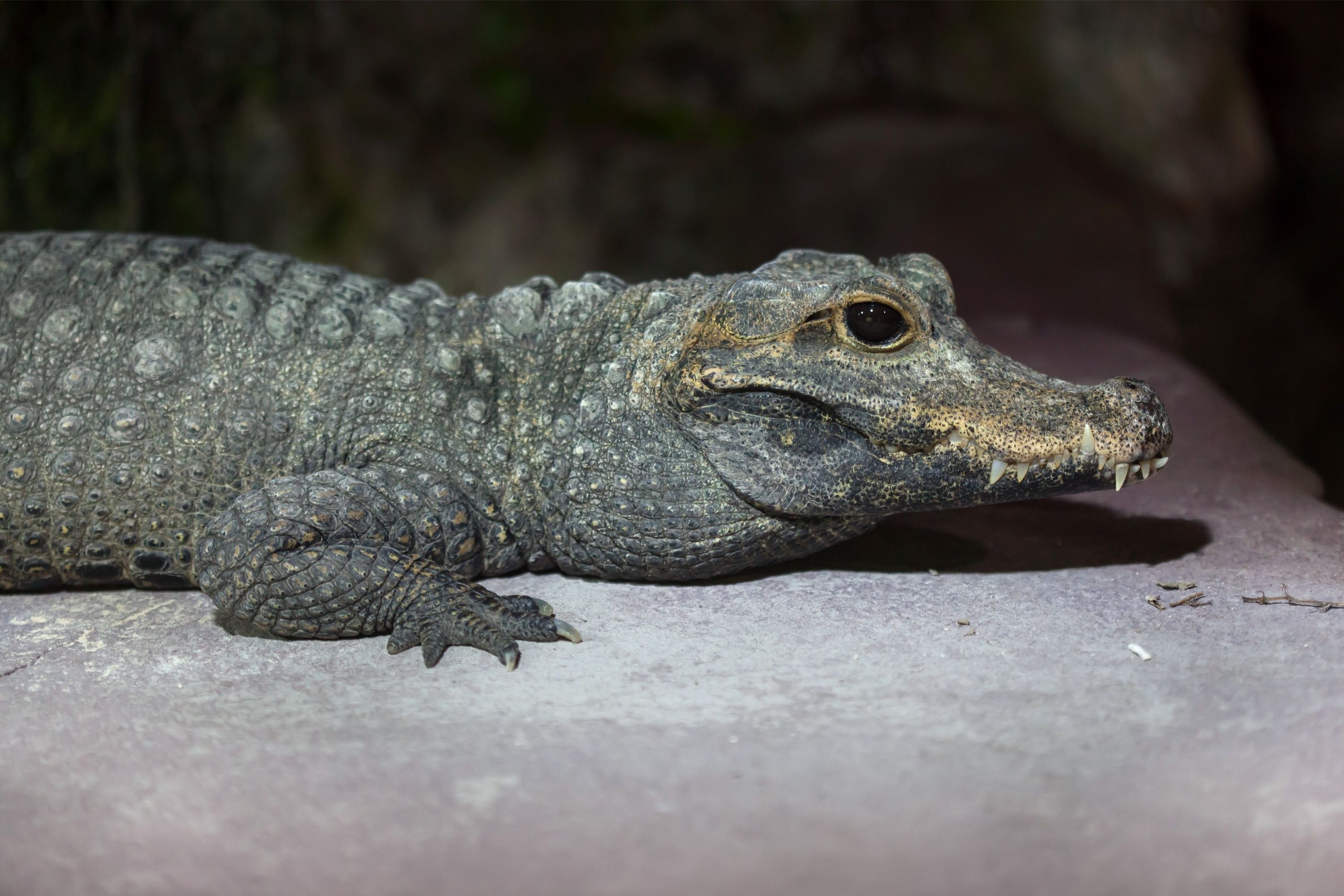Dwarf crocodile
(Osteolaemus tetraspis)

Description
The dwarf crocodile (Osteolaemus tetraspis), also known as the African dwarf crocodile, broad-snouted crocodile (a name more often used for the Asian mugger crocodile) or bony crocodile, is an African crocodile that is also the smallest extant (living) species of crocodile. Dwarf crocodiles range across tropical regions of Sub-Saharan West Africa and Central Africa. Such a distribution greatly overlaps with that of the slender-snouted crocodile, encompassing countries as far west as Senegal, reaching Uganda in the east, and ranging as southerly as Angola. The last confirmed record from Uganda was in the 1940s, but whether the species, which is easily overlooked, still survives there is unclear (it was always marginal in this country, only occurring in the far southwest). Dwarf crocodiles live from lowlands to mid-altitude in streams, small rivers, swamps, pools and mangrove, but generally avoid main sections of large rivers. Most of their range is within forested regions, but it may extend into more open regions where the streams or river are well-shaded. Unlike most crocodiles, dwarf crocodiles only rarely bask in the sun. During the night they may move some distance from water on land. Reports exist of dwarf crocodiles in isolated pools in the savannah. Dwarf crocodiles living long-term in caves are known from western Gabon, which stand out as an isolated genetic group. Dwarf crocodiles attain a medium adult length of 1.5 m (4.9 ft), though the maximum recorded length for this species is 1.9 m (6.2 ft). Adult specimens typically weigh between 18 and 32 kg (40 and 71 lb), with the largest females weighing up to 40 kg (88 lb) and the largest males weighing 80 kg (180 lb). This makes it the smallest living crocodile species, although the Cuvier's dwarf caiman (Paleosuchus palpebrosus), a member of the family Alligatoridae, is smaller at up to about 1.7 m (5.6 ft). If the Congo dwarf crocodile (O. osborni) is recognized as a valid species, it would be both the smallest crocodile and the smallest crocodilian since it does not surpass 1.2 m (3.9 ft). Adults are all dark above and on their sides, while the underside is yellowish with black patches. Some individuals living in the caves of Abanda, Gabon, displayed orange patches, apparently due to alkaline bat guano that erodes the skin of the crocodile. Juveniles have a lighter brown banding on body and tails and yellow patterns on the head.
Taxonomic tree:







